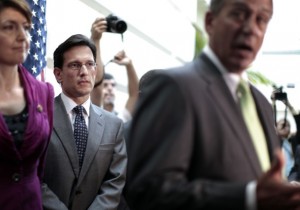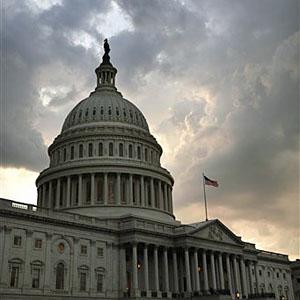“FEDERAL RESERVE NOTE”
“THIS NOTE IS LEGAL TENDER FOR ALL DEBTS PUBLIC AND PRIVATE”
Two intertwined events took place between the end of World War II and the dawn of the 21St Century.
“FEDERAL RESERVE NOTE”
“THIS NOTE IS LEGAL TENDER FOR ALL DEBTS PUBLIC AND PRIVATE”
Two intertwined events took place between the end of World War II and the dawn of the 21St Century.
Focusing on “Operation Olympic Games,” the US efforts behind the Flame and Stuxnet cyber attacks, Mischa Glenny, in “A Weapon We Can’t Control,” an op-ed in the NY Times, 6/24/12, says the U.S. has “fired the starting gun in a new arms race … cyberweaponry.” However, Mr. Glenny ignores efforts by hackers in China and from the former Soviet Union.
 _
_ ![]() Tweet I spoke with two of the Wall Street protesters this morning. We discussed credit unions, other cooperative ventures, Buckminster Fuller’s ideas, capitalism, and productivity. (“A 4-day work week,” Fuller was quoted as saying, “would give us time to enjoy the wealth we create.”) We didn’t talk about Warren Buffett or President Obama, but it seems that both would agree with the protesters’ sentiments, as I do, that our financial system “favors the rich and powerful at the expense of ordinary citizens.” (The protests and the protesters’ motives were described here by Colin Moynihan in the New York Times, Sept. 17, 2011.) The protests are also covered by Think Progress, here.
Tweet I spoke with two of the Wall Street protesters this morning. We discussed credit unions, other cooperative ventures, Buckminster Fuller’s ideas, capitalism, and productivity. (“A 4-day work week,” Fuller was quoted as saying, “would give us time to enjoy the wealth we create.”) We didn’t talk about Warren Buffett or President Obama, but it seems that both would agree with the protesters’ sentiments, as I do, that our financial system “favors the rich and powerful at the expense of ordinary citizens.” (The protests and the protesters’ motives were described here by Colin Moynihan in the New York Times, Sept. 17, 2011.) The protests are also covered by Think Progress, here.
Buffett, in “Stop Coddling the Super-Rich“, published in the NY Times, said
I paid … only 17.4 percent of my taxable income — and that’s actually a lower percentage than was paid by any of the other 20 people in our office. Their tax burdens ranged from 33 percent to 41 percent and averaged 36 percent.
If you make money with money, as some of my super-rich friends do, your percentage may be a bit lower than mine. But if you earn money from a job, your percentage will surely exceed mine — most likely by a lot.
Obama’s initiative is explained on White House . gov and Talking Points Memo, and by Obama in recent days, “It’s not class warfare,” he said, “it’s math” and “If it’s class warfare,” he said in Ohio and Kentucky, while discussing an old bridge between southwestern Ohio and Kentucky that needs to be renovated, “I’m a warrior for the Middle Class.”
Move On has a petition here, saying, “I agree with Buffett – and Obama.”
Despite the evidence, from the 2001 to the present, that cutting taxes on rich people does not create jobs, Charles Gasparino, in the New York Post, a Rupert “We-hack-cell-phones-for-fun-and-profit” Murdoch product, said, here, “taxing the rich will destroy jobs.”
Gasparino is clearly wrong. And Buffett and Obama are clearly correct. Rich people can afford to pay higher taxes, and asking them to pay 17.4% while others, who need to spend a much higher percentage of their income on food, clothes, and housing, pay 33% to 41% does not seem fair.
But the question is “What do we do with the money?” Buffett has also said that he would never have made the money he made had he not been born in the United States, and had he not gone to Columbia University and studied “Value Investing.” He basically argues that the cultural climate and economic systems in the United States enabled him to become wealthy, that this is a good thing, and others deserve the same opportunities. “We must plan for the future and invest in infrastructure. And the wealthy should pay their fair share. ”
Tax policy must be linked to fiscal policy. What we are doing today, Obama, Buffett, and the protesters would say, is using tax policy to make rich people more rich. They would argue, and I would agree, we should use tax policy to develop infrastructure. One idea is to build a 40 kilowatt photovoltaic solar array on each of the 92,000 public schools in the United States. Solar only generates power during the day; schools need most of their power during the day. This would use tax revenues to pay for infrastructure upgrade – and tax revenues pay public schools electric bills. PV Solar systems provide energy without pollution, without toxic wastes, without greenhouse gases. And in the event of an emergency, if disconnected from the grid, we would have a network of 92,000 local emergency shelters with power during the day, when the sun is shining.
Marked cards and a stacked deck are great when you’re doing card tricks. But don’t play poker against a cheater using them.

![]() Tweet The Washington Post reported, here, that John Boehner, Eric Cantor, Paul Ryan, and the “Young Guns,” their Republican comrades in the House of Representatives, PLANNED as far back as January, 2009 to use the debt ceiling to create a political crisis. It seems to have worked. The Republicans held fast, Obama and the Democrats blinked. The rating agency Standard & Poors, S&P, downgraded their rating of the credit-worthiness of the United States of America, President Obama’s core supporters seem to be abandoning him. And the stock markets are plummeting – the Dow Jones Industrial Average dropped 1000 points in 3 days.
Tweet The Washington Post reported, here, that John Boehner, Eric Cantor, Paul Ryan, and the “Young Guns,” their Republican comrades in the House of Representatives, PLANNED as far back as January, 2009 to use the debt ceiling to create a political crisis. It seems to have worked. The Republicans held fast, Obama and the Democrats blinked. The rating agency Standard & Poors, S&P, downgraded their rating of the credit-worthiness of the United States of America, President Obama’s core supporters seem to be abandoning him. And the stock markets are plummeting – the Dow Jones Industrial Average dropped 1000 points in 3 days.
Allowing US debt to be downgraded – forcing it to be downgraded – will cause a rise in interest rates, an increase in unemployment and bankruptcies. Altho a rise in interest rates will benefit bondholders. This is not the fiscal policy I expect from the party that claims to be fiscal conservatives. Altho, as noted, it does benefit bondholders.
The government should be creating jobs. Our elected representatives should be guiding the ship of state to a prosperous and sustainable future, not selling it short.
The NY Times reports, here, that S&P’s downgrade will spur the Republicans to demand more cuts in government spending, which will put more people out of work, furthor erode the economy. The only hope for the country is for Obama to realize that there is nothing he can do to win the love and admiration of the right wing, to ignore them and look to the center and to his base, and do what is good for the country, regardless of what Bachmann, Boehner, Cantor, Ryan and the Young Guns, and Grover Norquist want.

![]() Tweet I thought the market would crash in the wake of the Earthquake / Tsunami / Nuclear Meltdowns at Fukushima. It didn’t. However, something much less serious may be bringing the market – and the economy – to it’s knees. Politics. The Voice of America reported here that Standard & Poors downgraded US debt from AAA to AA+. Click here for the S&P’s Special Report and here for the full report.
Tweet I thought the market would crash in the wake of the Earthquake / Tsunami / Nuclear Meltdowns at Fukushima. It didn’t. However, something much less serious may be bringing the market – and the economy – to it’s knees. Politics. The Voice of America reported here that Standard & Poors downgraded US debt from AAA to AA+. Click here for the S&P’s Special Report and here for the full report.
S&P’s analysts wrote:
The downgrade reflects our opinion that the fiscal consolidation plan that Congress and the Administration recently agreed to falls short of what, in our view, would be necessary to stabilize the government’s medium-term debt dynamics.
 It is clear that the emphasis on cutting government spending, eliminating government jobs, eliminating benefits to unemployed citizens, rather than raising revenues and developing infrastructure is not in the long term or short term interests of the United States. As the 512 point drop in the Dow Jones Average, and the downgrade of US debt indicate, Republicans and the Tea Party should be careful for what they wish for – they just might get it.
It is clear that the emphasis on cutting government spending, eliminating government jobs, eliminating benefits to unemployed citizens, rather than raising revenues and developing infrastructure is not in the long term or short term interests of the United States. As the 512 point drop in the Dow Jones Average, and the downgrade of US debt indicate, Republicans and the Tea Party should be careful for what they wish for – they just might get it.
In the discussions over the debt ceiling, John Boehner said something to the effect that if a family or a business is borrowing too much it simply must tighten it’s belt. Continue reading
The rainbow in the grey skies is magical and alluring. But take a look at history before suggesting that the USA should operate under the limitations of a balanced budget. A good place to start is by searching on milestone wars that made or saved this country. Try a search such as “US Revolutionary War debt,” “US Civil War debt,” or “US WW2 debt.”
Then try to decide if the US Constitution had such an amendment from day one would we:
Would we have climbed out of the Great Depression without Roosevelt applying Keynes’ ideas on government projects?
The idea of sending America’s youth into battle without proper equipment and financial support is powerful motivator for me. I was in the Air Force during a budget battle and we literally could not fly our fighters because Congress did not approve enough money for fuel while they argued about the overdue budget! Thankfully that was peace time.
Let’s take a look at the financial meltdowns this country has encountered and the effects that a Balanced Budget amendment would have had. Take a look at just two, the Great Depression and the 2008 meltdown. The government did not do all the right things to prevent or solve these problems. The solutions (i.e. the recovery) required combination of forces including government spending, Wall Street and Main Street.
Search on “US Depression debt” and read current events to see the impact of such economic events on the deficit. Thank you Uncle Sam for pitching in to take away the pain and suffering that literally millions of Americans faced during these crashes. I am glad you had a credit card to use to save us!
The metaphorical Atlas – is he the government or the taxpayers? Ours is an experiment in government of the people, by the people, for the people.” Is there a difference?
I probably should stop here but …
Continue reading
(Second in a series on the ecological economics, financial ramifications, logistics, and systems dynamics of nuclear power in the light of the ongoing catastrophe at Fukushima.)
Cary Krosinsky, VP at Trucost, is once again teaching a course on Sustainable Investing at the Center for Environmental Research and Conservation, CERC, at Columbia University. At the March 10 seminar a student spoke about her recent 400% “home run” in a uranium mining operation. She bought in because the earnings were high, debt was low, yet the price was low. It was a classic “value” play of a well-run company undervalued by the market.
But would a “Sustainable Investor” buy a uranium stock? My goal, as a “Sustainable Investor” is “To outperform the S&P 500 index by investing in the top companies, from the perspective of environmental impact, sustainability, management and governance, in the sectors I hope will thrive over the next 25 to 50 years.”
Cary didn’t exactly write the book on sustainable investing. He edited it. In Sustainable Investing, the Art of Long Term Performance, copyright, (C) Cary Krosinsky and Nick Robins, 2008 (Earth Scan) he defines “Sustainable Investing” as “an approach to investing driven by the long-term economic, environmental, and social risks and opportunities facing the global economy.”
Jane and Michael Hoffman, in Green, Your Place in the New Energy Revolution, wrote that the nuclear industry was killed not by the protesters at Seabrook, and the environmentalists at Environmental Defense (EDF), Union of Concerned Scientists (UCS), or local groups like NY Public Interest Research Group (NYPIRG) who hired lawyers and scientists to force the utilities to build plants more safely. But it was bankers on Wall Street who, in the aftermath of Three Mile Island and Chernobyl, realized that their Million-dollar investments could turn into Billion-Dollar liabilities in seconds, and stopped investing in new nuclear power plants. Even though their liability was limited by the Price Anderson Act in the US and by corresponding legislation in other governments, they might never see a return on their investment. Despite promises by Presidents George W. Bush and Barack Obama of loan guarantees – government subsidies – to build plants, Wall Street is reacting to Fukushima with a mix of caution and skepticism. According to the Wall Street Journal, “The Street” is now, once again, bearish on nuclear power but it is looking again at solar and wind. (click here).
“The nuclear industry is on edge after last week’s quake caused serious damage to several reactors. Bank of America Merrill Lynch cut its stock-investment rating of Entergy ($69.76, -$3.93, -5.33%) and Scana Corp. (SCG, $38.54, -$1.51, -3.77%) to underperform from neutral, citing risks including delays and higher approval costs for relicencing of existing plants. Dahlman Rose says as many as 10 reactors could be affected, which consume the equivalent of 340,000 pounds of uranium each month. The firm cut its price targets for Cameco Corp. (CCJ, $30.90, -$6.48, -17.34%) and Uranerz Energy Corp. (URZ, $3.08, -$0.87, -22.03%).
“CreditSights and other analysts form a chorus that the “nuclear renaissance” of new plants in emerging markets and developed nations will slow, while the potential for new design and safety measures could challenge sector economics .
“Japan’s nuclear crisis is hammering shares in the U.S. nuclear sector, but investors should keep an eye on engineering-and-construction stocks that work in the sector as well, JP Morgan says, citing Shaw Group Inc. Babcock & Wilcox Co. , URS Corp. and EnergySolutions Inc. “We believe the safety features of newer generation reactors will be considerably more advanced” than the older Fukushima units causing havoc over the weekend, the firm writes, but still sees likelihood that renewed nuclear worries are a headwind for these stocks.”
Here are the data:
| Company | Symbol | Quote | Change | Percent |
| Entergy | ETR | $69.76 | ($3.93) | -5.33% |
| Uranium Energy | UEC | $4.03 | ($0.82) | -16.91% |
| Shaw | SHAW | $30.92 | ($7.49) | -19.50% |
| Babcox | BWC | $31.58 | ($2.79) | -8.12% |
| URS | URS | $43.88 | ($1.58) | -3.48% |
| First Solar | FSLR | $145.13 | $5.39 | 3.86% |
| (data from March 14, 2011.) | ||||
My analysis –
Peter Crowell, professor of Finance and Logistics in the Marlboro College MBA in Managing for Sustainability asked “What happens if you – we – take away all the subsidies?”
If we take away the subsidies from nuclear power, the industry would collapse. The same holds for the fossil fuel industry – if you factor in the hidden “externalized” costs of environmental cleanup. It makes no sense to build nuclear plants, or coal plants, drill for oil or use fracking for natural gas. These are more expensive to build, run, and maintain than solar and wind. Rather than keeping nuclear and fossil fuels on life support while fuel gets harder and more expensive to extract we need to put our best engineering minds to work on clean, sustainable power.
And I expect the vultures on Wall Street to buy Japanese stocks as soon as they sense the market has hit bottom, but only if they see investment in infrastructure.
Interviewed in prison, Bernie Madoff asserted that banks and hedge funds were “complicit” in his elaborate fraud. Diana Henriques, writing in the NY Times, 2/15/11, (here) said “Madoff described as ‘willful blindness’ their failure to examine discrepancies between his regulatory filings and other information,” Quoting Madoff, “They had to know. But the attitude was sort of, ‘If you’re doing something wrong, we don’t want to know.’ ”
Look at this in the context of the the Financial Crisis. The bi-partisan committee on the financial crisis, FiscalCommission.Gov, released its findings on Thursday, 27, January, 2011. The Commission, I think, got this one right. The financial crisis could have been avoided. This thirty-year economic experiment in de-regulation, which started under President Reagan, has proven that self-regulation doesn’t work; the government must regulate the financial industry. The foxes can’t guard the henhouse. Continue reading
The government recently took over Fannie Mae and Freddie Mac, two huge mortgage lenders. I thought the government owned them all along. After all, Freddie Mac” is the Federal Home Loan Mortgage Corp. and Fannie Mae is the FederalNational Mortgage Assoc. But they were privately owned, essentially bankrupt, and in need of a bailout. For more background, see Web of Debt, by Ellen Hodgson Brown, The source of the bailout funds will be my tax dollars, and yours. This gives us the right to a voice on how to execute the bailout. I had a long conversation with Mitchell Kitroser, Esq. , an attorney based in Florida. Kitroseris focused on Real Estate, Probate, Elder Law, Medicaid Planning, Guardianship and Estate Planning.His plan willstimulate the economy,put more money in the U. S. Treasury, and helphomeowners and taxpayers.
As the old saying goes, “If you have lemons, make lemonade.” Here’s my recipe for lemonade. Let’s use the banks we just bought to get us out of the real estate mess those and other banks created, and at the same time, to help American homeowners – to help ourselves. We will stimulate the economy and provide the government – our government – the government “of the people, for the people and by the people” – with a revenue stream. We will even help homeowners stay in their homes.
Since our government just went into the mortgage business, it should start doing refinances. Every American who wants to refinance their primary residence should be permitted to do so, through our new government owned banks, Fannie Mae and Freddie Mac. These mortgages should be at very low rates – 2% or 3% per year. The savings on the traditional 30 year fixed mortgage, using a $200,000.00 at 6% interest refinanced to $200,000 at 2%, would be almost $450.00 per month. The savings would be about $225 per month on every $100,000 of debt.